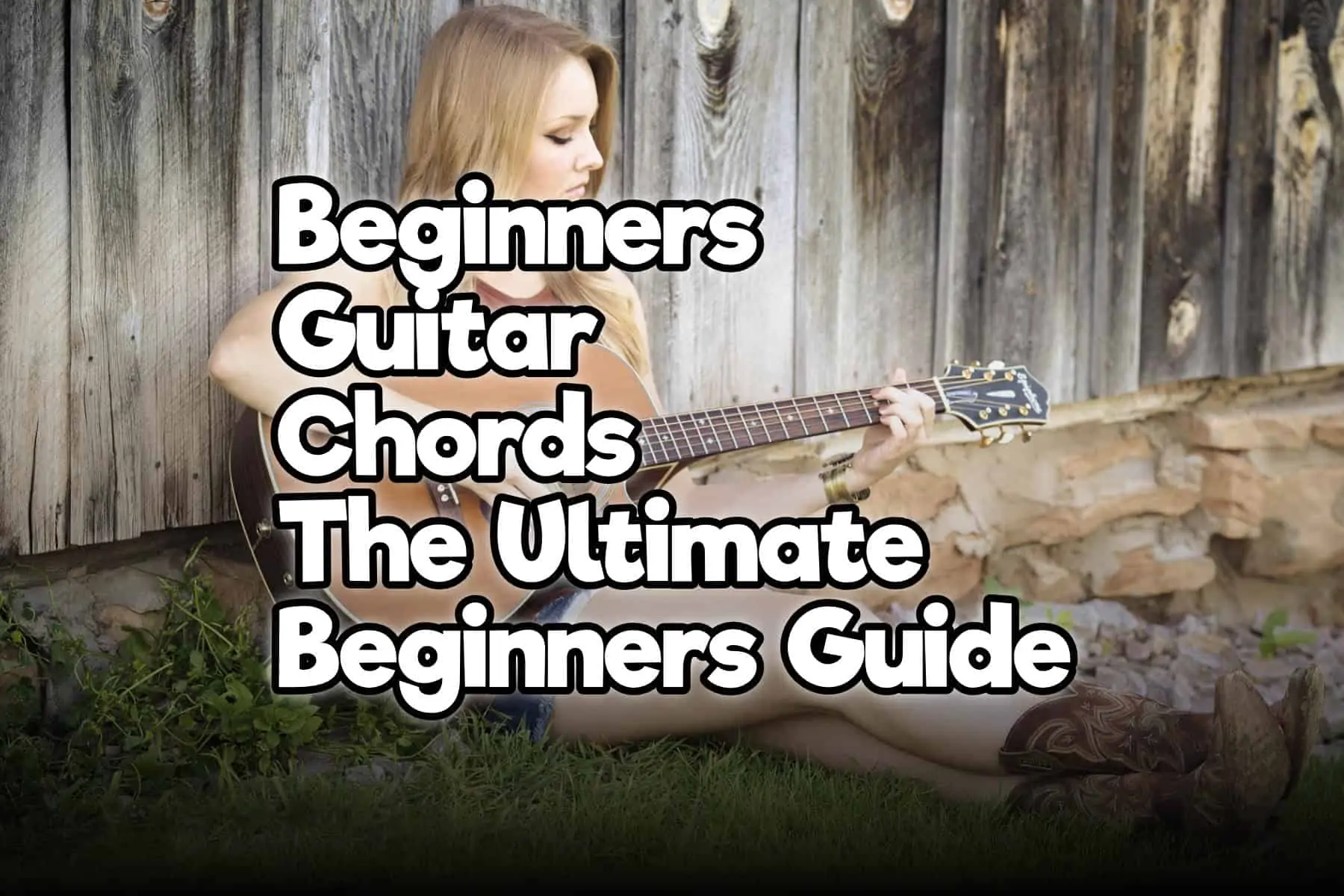One of the most important things when it comes to guitar playing is chords. There are so many variations and types for each and every possible tone and semitone. Most of beginner guitar players create some kind of aversion towards the chords and try to push learning them as further as possible. But bear in mind that you will never be able to play guitar without them and that they are basically a foundation of every song.
What Are Guitar Chords?
Chords are several notes that are played simultaneously. It is basically a harmonic set of pitches. Chords are mostly used to create the beat and rhythm of the song. By using the combination of upstrokes and downstrokes, players would get different combinations or strumming techniques that will further allow them to create different rhythms.
When we talk about guitar chords in popular (modern) music, the notations would usually be above the lyrics marked simply with the letters of the chords. For example, the C triad we mentioned would be just “C”
if you feel like your fingertips are not strong enough while playing then make sure to check my 11 Easy Tips on How To Toughen Up Your Fingertips
The Most Used Guitar Chords – Open Chords
One of the main reasons why these are most used guitar chords, and why they are a perfect starting point for every beginner, is because there are “open” versions of these chords. What is an open chord, you might ask? An open chord is a chord played at the top of the neck, near the headstock. The trick is that you will use lots of open strings while playing them. By open strings, we mean strings that are played without pressing any fret. In standard E tuning, notes of the strings would be E, A, D, G, B, E.
These are the most popular guitar chords, also known as open chords:
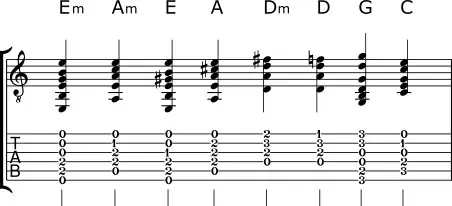
- Em (E minor)
- C (C major)
- Am (A minor)
- Dm (D minor)
- G (G major)
- D (D major)
- E (E major)
- A (A major)
The first guitar chord you should learn is Em. this is the easiest chord there is. After you got the hang of it you should move the C major chord. Because, most exercises, scales, and chords would use C major as a basic and do everything through the C major scale. The reason for this is that on the C major scale there are no sharps or flats. When you play C major you will only use full notes or what would be white keys on the piano.
While there is an open chord version for all of the chords, some are a bit advanced for beginners so it might be a better idea to switch to an occasional barre or other type chords.
There are countless songs that can be played using basic open chords, and learning at least three of them will allow you to play an unbelievable number of songs.
How To Play Em (E Minor) Chord On The Guitar
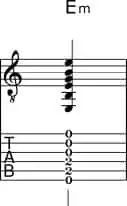
So, for open E minor chord, you would press only second frets on the fourth and fifth strings. That would make A string play B note, and D string play E note. So basically, you would have E, B, E, G, B, E, which is a six-string E minor chord. E minor is important because it will be used as a milestone for all other barre chords with the root note on E string.
How To Play C (C major) Chord On The Guitar
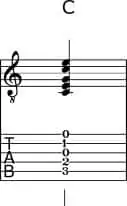
C major scale is one that is used as the basis for almost every scale and chord in music. If we apply our theory to the C major scale, the triad would be C, E, G from C, D, E, F, G, A, B. Like with the previous examples we will use the first, third and the fifth note to create a triad and a chord from that. In the example, we will have a third fret on the A string as our first note C, second fret on the D string which is note E, open G string, the first fret of the second string which is C, and open E string. The reason why the C scale is always used for example is that there are no flats or sharps in the scale. We can use C major chord shape to create other chords but it might be a bit too complex for beginners.
if you are looking for your next gear or an accessory that can improve your playing experience but you are not sure what it is exactly, make sure to check my post Top 27 Must Have Guitar Accessories For Every Guitarist
How To Play Am (A Minor) Chord On The Guitar
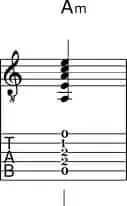
Similarly to E minor chord, A minor would be a milestone for barre chords that have roots on A string. A major scale will be used to create A minor chord or Am. If we take a look at the A major scale we will have A, B, C#, D, E, F#, G#, so the root (A), is followed by a minor third ( C), and perfect fifth (E). In the example of Am chord, we will now have A string open, the second fret on the third and fourth string, first fret on the B string and open high E string. A is the fifth string and the root note, so we will not use low E string at all. This will be a five-string open chord.
How To Play Dm (D Minor) Chord On The Guitar
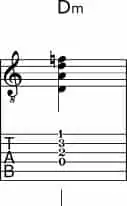
Since D note is the fourth string on guitar (counting from the thinnest string), we will use only four strings, or the first four. D, E, F#, G, A, B, C# is D major scale and minor triad is D, F, A. When we apply that to the open chord, we will have open fourth string (D string), second fret on the G string, third fret on the B string, and first fret on high E. While this can be applied to any other chord, creating barre chords based on D minor is not as often. Dm is a four-string open chord.
How To Play G (G major) Chord On The Guitar
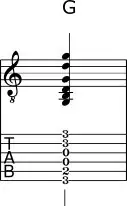
Now, when it comes to major chords, we already went through major triads. The same principle will be used for any other major chord. For example, G major would have the third fret on low E string or the G note, Second fret on the A string, opened D and G, string, The last two notes are the third fret on the B string which is G, and the third fret on high E string, which is G.
This is the open G major version of the chord and it is a six-string chord. While there is an option to play it with open B string, this is a full version of the chord. Furthermore, it cannot be used (at least not easily) for creating a barre chord from it.
If you wish to exercise your chord switching, then check out my post 17 Tips & 5 Exercises To Improve Your Guitar Chord Changing
How To Play D (D major) Chord On The Guitar
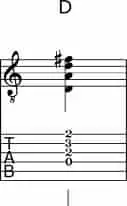
Similar to the D minor chord, we will use the same scale, but without a minor third. So the notes would be D, F#, A for the major triad. Just like the minor version of the chord, we will use four strings and the fourth one is open. The second note is the A, which is on the second fret of the third string. The second string, the third fret is D, and the second fret on the high E is F#. This is one of the more used open chords and you can use the first three strings to create other chords by moving them down the neck.
How To Play E (E major) Chord On The Guitar
We already mentioned the E scale and the main difference between major and minor is that one note. For E scale and E chord that note would be G to G#. So the full E major would be E, B, E, G#, B, E. This chord is important because it will be used for creating all of the major barre chords with the root note on E string.
How To Play A (A major) Chord On The Guitar
Similar to the A minor we will have the same scale and one-note difference. Using the same scale A, B, C#, D, E, F#, G# we will take A, C#, and E. The notes for the A major chord are open A string, second fret on the fourth string or an E, second fret on the third string or A, second fret on the second string C#, and open high E. We won’t play the sixth string since this is a five-string chord with the root on A string.
Barre Chords
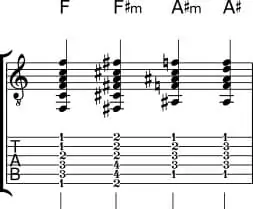
Barre chords have been the bane of many beginner guitar players. The whole idea behind the barre chords is that they are not simple and that it will take an enormous amount of time until you master them. But the basics are rather simple. If we take that open chord from the previous example, E minor, and move every note for one fret we will get F minor chord.
So what’s the problem, you might ask. When we played E minor, we had 4 strings that weren’t fretted at all. Now we will move those open strings and play it on the first fret. The only way to do this is to press all of the six strings with your index finger. This is where the main problem is. Not only that you’ll need to fret all the strings at once, but you’ll need to place your other fingers to form a certain chord. For F minor, you will fret the entire first fret, and use your ring and pinky finger to press the third frets on A and D string.
Now you can see where the problem is. For some more complex chords, you will need to do a bit of stretching or to play it differently compared to other chords. Many beginners struggle with these chords for months, even years. And barre chords are something that you’ll have to learn if you want to be a guitar player. No matter what music genre you play, sooner or later you will need to confront this problem and find a way to emerge victoriously.
While power chords might sound a bit weak on the acoustic guitar, humbuckers and high gain will do wonders with it. If you remember that famous “Smoke on the Water” riff you’ll understand how powerful something can sound with only a few notes.
How To Play F (F Major) Barre Chord On The Guitar
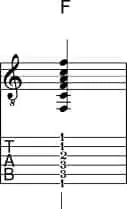
The F note is the first fret on the E string. By taking that open E as the basis of Barre chords with the root on E string, we will simply move every note for one fret. Instead of playing E, B, E, G#, B, E, we will play F, C, F, A, C, F. By moving the shape of the chord we will be able to play all 12 major chords on E string.
How To Play F#m (F# Minor) Barre Chord On The Guitar
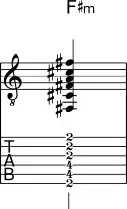
Similar to creating F major barre chord, we will use E minor as an example and move everything for two frets to get F#m barre.
How To Play A#m (A# minor) Barre Chord On The Guitar
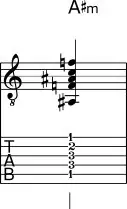
The other type of barre chords will use A as the basis (both minor and major). If we take a look at open Am, we will simply move everything for one fret to get A#m. Every open string would become the first fret, and every first fret would become the second, and so on. Applying the same logic as for the E based chords, we will have all 12 chords with the root on the A string by using this shape.
How To Play A# (A# minor) Barre Chord On The Guitar
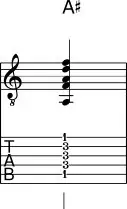
Now this one is a bit tricky, but only because of the finger position. A# barre would be the same as A major chord where everything is “moved” for one fret. You will only have to find a comfortable way to fret all three notes while holding the barre chord.
Power Chords
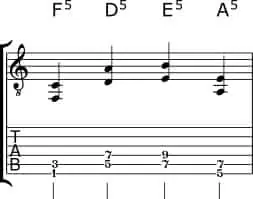
If you ever listened to a heavier type of music like rock or heavy metal, you might have noticed that there aren’t many chords used in their song. The main reason is that they use power chords. Power chords are a simpler version of barre chords where you play the first two strings (counting from the thickest string). The reason why this is possible is that with more gain or distortion, you will have less need to create a fuller and richer tone. Your pickups and amplifier will do that for you. So you will find yourself in a situation where playing two strings per chord is enough.
The other name for this type of barre chords is fifths. The other important thing is that you’ll be saved from thinking whether you need a major or a minor. Power chords are simply E5 for example. The third or fourth note that would be the change between the major and minor are simply not played. So this might be a bit easier for beginner players because they will have fewer things to worry about.
How To Play F Power (F5) Chord On The Guitar
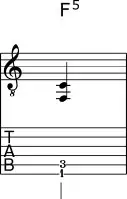
Using the barre chords as an example, we will play only the first two notes of the chord or the root note and the fifth one. So for F5 or F power chord, we will have the first fret on the low E string and the third fret on the A string. Because we play only the first and the fifth we won’t have the chance to play that third that would decide if the chord is major or minor. So every power chord is just that. A power chord.
How To Play D Power (D5) Chord On The Guitar
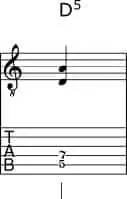
Using the root note or the fifth fret of the A string, we will get the first half of our power chord. The next one is the seventh fret of the D string or the A note.
How To Play E Power (E5) Chord On The Guitar
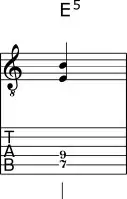
While E power chord or E5 can be played by plucking the first two strings of the open chord, it is more often to use the other version which is an octave higher. So E note is the seventh fret on the A string, and the ninth fret on the D string is his fifth or B. No matter if you choose to play open E5 or an octave higher E5, you will still play two notes E and B.
How To Play A Power (A5) Chord On The Guitar
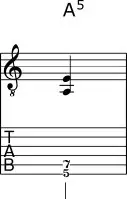
Similar to E5, you can opt to play A5 on both A and E strings. Depending on the string, you will find the root. While it is not uncommon to play A5 from the open A chord, it will usually be played as a chord based on E. Fifth fret on the low E string is the root or the A note. And the seventh note on the D string would be a fifth or E note.
Barre Chords – Easier Way
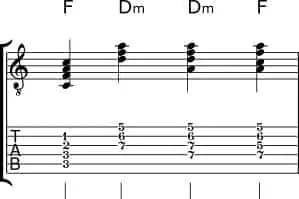
While there are times where you’ll need for all the strings in the chords to be precise and heard, this is not the case most of the time. For simpler songs and for the majority of music, you will need only a few notes.
Thanks to that, you can isolate the things that you need and avoid having to fret all six strings at once. For example, if you want to play an F minor chord, you will ignore the sixth string. Simply don’t play it. Start from the A string and place your fingers on the other four strings. By ignoring both high and low E string, you will have only four of the strings where you can do wonders.
Simply place each finger on one string, and you will get a sound that is almost identical to the barre chord without having to struggle to fret every string.
One of the main issues, when it comes to barre chords, is that besides dexterity, beginners are lacking the strength to fret all the strings at once. Furthermore, even if they manage to do it, they won’t be able to do it for long. Playing one song with barre chords can be a struggle, let alone playing an entire show.
By playing only four or even three strings, you will make your life much easier. But bear in mind that this is not a permanent solution. While this can work for some songs, there are still others that will require you to play full barre chords. Otherwise, it might sound really bad.
How To Play Shorter F (F Major) Barre Chord On The Guitar
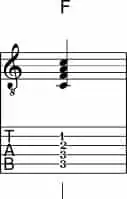
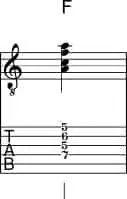
If we take the standard F barre chord. We can simply not play both high and low E string to avoid having to fret all six strings. This way we will only have to play the second, third, fourth, and fifth string. While it doesn’t sound like much, this way we can play the chord without barring the entire neck.
The other option would be to use the open C shape and move it across the neck but play only on the first four strings of it. Just don’t forget to fret the notes that were previously open.
How To Play Shorter Dm (D Minor) Barre Chord On The Guitar
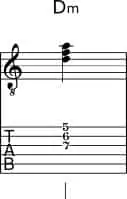
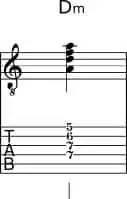
The way we can shorter barre chords that are based on the A string is that we can play only the first three or four notes. This way you won’t have to fret everything with your index finger. You could play simple three or four notes that would be your D minor chord.
Minor Vs Major Guitar Chords
The two of the most used types are minor and major. But what is the difference between those two? Well, to put it in simple words, the only difference is half a tone in the third note of the scale. In practice, the major chord would sound cheerful, happy, triumphant… While the minor will sound more bittersweet, scary, or sad…
If we look at the theory part of this then difference is that we would use the first root note, a minor third, and a perfect fifth. For an example of the C major scale, we would have C, Eb, and G. The third note or the minor third is E flat. To simplify it a bit, we will use the first, third, and fifth notes from the scale to create a major triad. For minor triad we will still use the first, third, and fifth note, except the fifth would be flat.
Of course, there are other types of chords besides minor and major and those are sevens, nines, augmented, suspended, and others.
If you wish to extend your knowledge about music theory check out my post Guitar Music Theory In-Depth Basics
How To Build A Guitar Chord
Most chords are based on triads. Triads are sets of three tones where the first one would be the root note, and the other two, for major, would be intervals of third and fifth from the root note. Usually, when you see a six strings chord, it will be an extended triad or chord.
If we take a look at the C major scale, the notes in it would be C, D, E, F, G, A, B. Naturally, for the C major triad we would have C, E, and G. So the principle for the chord building is rather simple.
You can find more about chord building in my post Guitar Music Theory In-Depth Basics
If you found this article useful, you may want to save this pin below to your Guitar board.
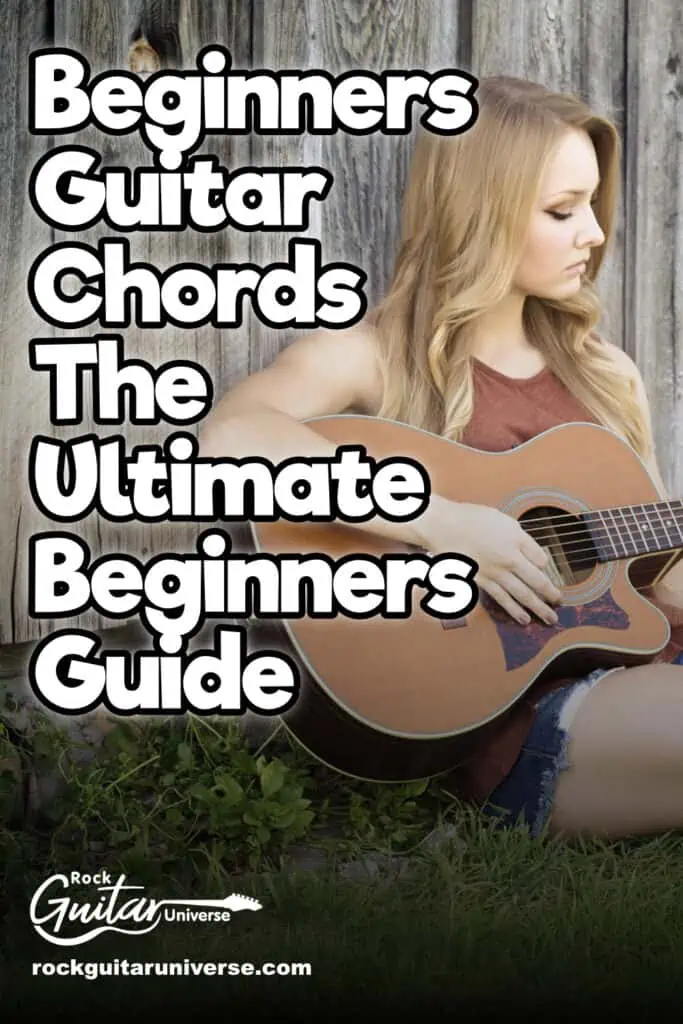
Recent Posts
Some guitarists insist on buying an expensive amplifier with their electric guitar. They assume that this is a must for every type of guitarist out there. However, in some situations, this isn’t...
Top 50 Free Realistic Guitar VST Plugins With Sound Examples
As technology has rapidly advanced in the recent decade, computers are stealing more and more roles from physical musical instruments and accessories. Nowadays, you do not need expensive amps,...

